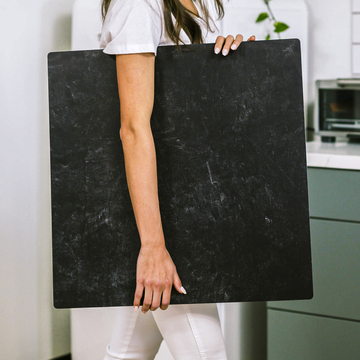After spending over a decade capturing product photos in every imaginable scenario, I've learned that mastering backdrop fundamentals can make the difference between amateur-looking shots and professional results. Let me share what years of hands-on experience has taught me about choosing and using the perfect backdrop kit.
Understanding Backdrop Materials
Think of your backdrop's surface as a sophisticated light management system. When light hits the material, it creates a complex interaction that directly impacts your final image. I discovered this reality during a high-stakes jewelry shoot when my budget backdrop created frustrating hot spots that required hours of post-processing to fix.
The Science of Surface Texture
Professional-grade backdrops feature carefully engineered surfaces that distribute light evenly across their entire area. This isn't just marketing speak - it's the result of precise manufacturing processes that create microscopically consistent textures.
Choosing Between Foldable and Rigid Systems
While portability might tempt you toward foldable options, my studio testing has revealed some critical trade-offs. Rigid systems typically offer superior stability and more consistent results, especially for longer exposure shots where micro-movements can impact sharpness.
- Foldable Backdrop Considerations: Check for stress points at fold lines
- Rigid System Benefits: Better stability and fewer light artifacts
- Storage Requirements: Plan your space needs accordingly
Environmental Factors That Impact Performance
Your studio's environment plays a crucial role in backdrop performance. Through countless shoots, I've identified these key factors:
- Temperature fluctuations can affect material tension
- Humidity levels influence surface texture
- Static electricity build-up varies by season
- Air circulation can cause unwanted movement
My Proven Backdrop Selection Process
- Evaluate your typical shooting conditions
- Test materials under your standard lighting setup
- Consider your storage capabilities
- Factor in your usual subject types
Professional Tips for Better Results
Here's what I've learned makes the biggest difference in daily use:
- Storage: Always store backdrops flat or rolled, never folded
- Cleaning: Use microfiber cloths only - never paper products
- Testing: Check for color consistency under all your lighting setups
- Maintenance: Regular inspection prevents unwanted surprises during shoots
Remember, the most expensive backdrop isn't always the best choice. Your selection should align with your specific shooting needs, studio environment, and workflow requirements. Through careful consideration of these factors, you'll find the perfect backdrop solution for your photography work.
The Bottom Line
Investing time in understanding backdrop fundamentals will elevate your photography more than any camera upgrade. Start with these principles, experiment with different materials, and watch your product photos transform from good to exceptional.


